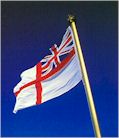
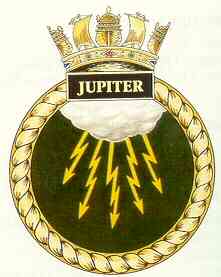


Wilkin, Alpha Kenneth
Steward
D/JX29104
H.M.S. Jupiter, Royal Navy
who died on
Monday, 10th March 1942. Aged 23
Alpha was the son of William and Mabel Maud Wilkin. They lived in Grange Bungalow on the boundary of Langenhoe with Fingringhoe, Essex. He attended Fingringhoe School. Prior to joining the Navy, Alpha worked on a fruit farm in Fingringhoe. Later during the war a flying bomb (doodlebug) landed in the field, next to their home. This was on the 12th December 1944. It blew the roof of their house and that of their neighbours. Unfortunately, his mother was outside at the time and was badly injured on the head by a piece of flying slate. As a result of the damage to their house, the family moved a few hundred yards to 42 Fingringhoe Road, Langenhoe.
A few months later, a second doodlebug passed over Mersea Island heading for the village. Fortunately, it was shot down by a spitfire and crashed into the Pyefleet between Langenhoe and Mersea.
Alpha's father, William was a regular sailor serving as a stoker. He had already received two badges for 8 years good conduct and been recently promoted to Petty Officer when he married just before the war. He served 23 years in all and retired in 1927.
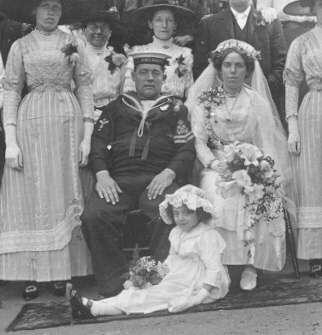
Petty Officer William Wilkin and his wife Mabel on their wedding day.
In the First World War, Alpha's father, William served in the Royal Navy on H.M.S. Ajax. H.M.S. Ajax was a modern Battleship of the King George V class, commissioned in 1913. She was in the Second Battle Group at the Battle of Jutland and post war was engaged in 1919 in the Black Sea against the Russians.

In the Second World War all three sons served. George was a Pioneer with the Royal Artillery. Alpha followed his father into the Royal Navy and Wilfred served in the Royal Signals.

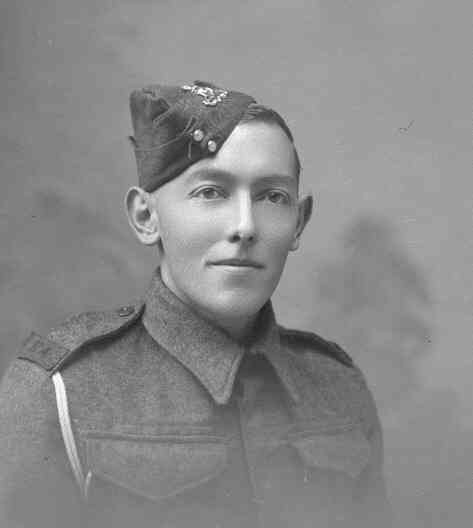
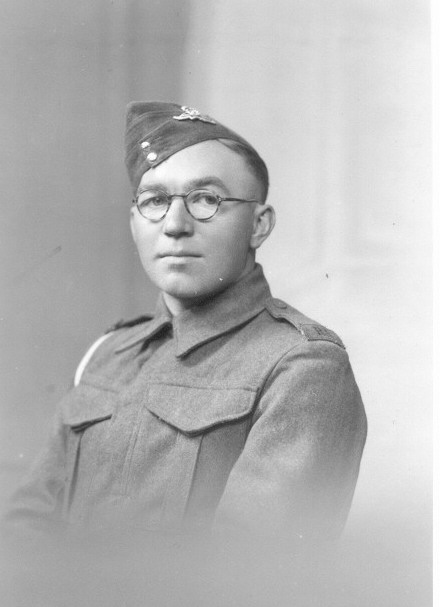
Alpha Wilkin George Wilkin Wilfred Wilkin

H.M.S. JUPITER
H.M.S Jupiter was a "Javelin" class destroyer completed 25 June 1939. On the outbreak of war, H.M.S. Jupiter, as part of the 7th destroyer Flotilla was transferred to Nore Command based on the Humber for patrol & escort duties.
9th October 1939
H.M.S. Jupiter was sent to pick up from the Danish MV Teddy, the crew of a German Dornier flying boat, which had been shot down in the North Sea. At 1518, H.M.S. Jupiter and her companion, H.M.S. Jervis were missed by bombs dropped from German bombers. At this point, the main machinery on H.M.S. Jupiter broke down and she had to be towed to Scapa flow by H.M.S. Jervis.
April 1940
H.M.S. Jupiter was one of a number of ships, under Admiral Sir Charles Forbes, fighting in Norwegian waters, trying to stem the German invasion. She left Skjelfjord on the 20th April to escort the tanker British Lady along with H.M.S. Hotspur & H.M.S. Punjabi to Scapa Flow.
31st August 1940
H.M.S. Ships Jupiter, Express, Intrepid, Ivanhoe, Esk & Icarius left Immingham on a mine laying operation in the vicinity of Vlieland off the Dutch coast. Before reaching the area H.M.S. Express struck a mine at 2307 and had to be towed stern first into the Humber by H.M. Ships Jupiter & Kelvin. Meanwhile, H.M. Ships Esk & Ivanhoe were also lost during this exercise.

H. M. S. Jupiter towing H. M. S. Express stern first. Copyright I. W. M.
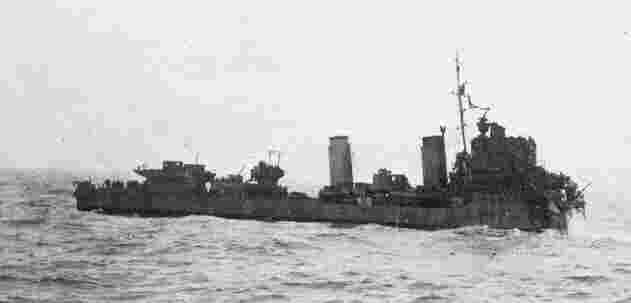
H. M. S. Express showing the missing bow section. Copyright I. W. M.
17th October 1940
Force "F" consisting of H.M. Ships Newcastle, Emerald, Jackal, Jupiter, Kashmir, Kelvin and Kipling moved to intercept a force of 4 German destroyers. Action was joined at 1607, when H.M.S. Newcastle opened fire at extreme range. Unfortunately, due to a defective steam valve, H.M.S. Jupiter could not maintain sufficient speed to keep up with the high speed chase (32 1/2 knots). She was diverted to lift the French Captain from a tunny fishing vessel nearby.
29th November 1940
The 5th Destroyer Flotilla comprising H.M. Ships Jupiter, Javelin, Jackal, Jersey & Kashmir, under Captain Lord Louis Mountbatten, were operating out of Plymouth. In the early morning faint gun flashes were seen, below the horizon to the eastward, and at 0530 the glow of a ship on fire was observed. The flotilla moved to cut off the Germans from their home port. 3 Ships, the Karl Galster, Richard Beitzen & Hans Lody, were spotted. Almost immediately fire was opened by both sides, who were about 1/2 mile apart. H.M.S. Javelin was struck by two torpedoes, which blew off her stern and bows, leaving less than half her hull in tact. She remained on an even keel and waited to be towed home. The rest of the British flotilla swept on to Brest but did not regain contact with the Germans.
23rd January 1941
H.M. Ships Jupiter & Jersey left for Gibraltar to escort H.M.S. Resolution back to the UK. While at Gibraltar, they joined the ships of Force "H" in the bombardment of Genoa. They returned to Plymouth on 3rd March.
25th September 1941
H.M.S. Jupiter arrived in Alexandria to join the 14th Destroyer Flotilla, having been converted for minelaying duties. She had sailed from Greenock via Simonstown & Mombasa. Her time in the Mediterranean was both short and uneventful.
November 28th 1941
"Z" Force comprising the battleships H.M. Ships Prince of Wales & Repulse left Colombo with a destroyer escort comprising H.M. Ships Jupiter, Electra, Encounter & Express. They reached Singapore on December 2nd . Unfortunately the battleships were to be sunk by air attack on the 10th December off Kuantan on the East coast of West Malaysia, when trying to attack the Japanese invasion fleet. The battleships had no air cover and so were vulnerable to the Japanese planes.
January 3rd 1942
ABDA (American, British, Dutch, Australian) Command was set up. The Eastern Fleet under Rear Admiral Doorman was based at Surabaya in Java and included H.M.S. Jupiter.
January 17th 1942
H.M.S. Jupiter was detached from the U.S.S Mount Vernon, which she had escorted through the Sunda Strait. She picked up an asdic contact with a submarine. After two depth charge attacks in quick succession, Japanese submarine, I -60, surfaced 500 yards astern of the Jupiter. The Jupiter altered course to close and while doing so opened fire with the starboard Oerlikon. She hit the conning tower, as the first of I-60's crew emerged to man the 4.7 inch gun. The submarine was unable to dive but determined to fight her gun, which kept up a steady seven to eight rounds a minute, even though the Jupiter kept picking off the men engaged in serving it. As fast as they were shot, others took their place. One round hit Jupiter's "A" gun mounting, putting it out of action and killing 3 men and wounding nine. Both vessels fired torpedoes at each other but missed. Yellow smoke poured from the submarine and she began to list. Two or three hits were registered on the submarine and the 4.7 inch gun was no longer manned. However, they continued firing from a machine gun, on the conning tower, as Jupiter approached at full speed. Another hit between the stern & conning tower by H.M.S. Jupiter, seems to have caused an explosion on board the submarine. The smoke from this explosion emerged from the tower. This gave way to flames, as Jupiter passed 15 foot abeam of the submarine dropping a shallow set depth charge. The bows on the submarine slowly lifted to an angle of 80 degrees and she sank by the stern in 500 fathoms. Only 3 survivors were picked up, one of whom subsequently died.

The sister submarine I-55 running trials in Hiroshima Bay, 1927 (*). She sank 25 miles WNW of Krakatoa (06S,105E).
February 12th 1942
The cruiser H.M.S. Durban, along with the destroyers H.M.S Jupiter & Stronghold, provided the escort for the last convoy of evacuees from Singapore bound for Batavia (now Jakarta). The convoy left in the early hours, H.M.S. Jupiter carrying 122 passengers. For some five hours the convoy was under heavy air attack, mostly by high flyers. The Empire Star was hit twice but a low flyer was shot down. Of seventeen attacks, eleven concentrated on H.M.S. Durban.
February 13th
H.M.S. Jupiter, together with Australian minesweepers, acted as escort to an oiler convoy from Palembang. Six of the convoy's ships were hit and two of them, the Manvantara and the Subadar were lost.
February 16th & 17th
H.M.S. Jupiter assisted in the evacuation of Oosthaven, Sumatra, and brought off the rear guard with the assistance of H.M.A.S. Burnie.
February 27th 1942
This was the battle of the Java Sea. The ABDA fleet comprised the cruisers De Ruyter, Java, Houston, Exeter and Perth with 9 destroyers, including H.M.S. Jupiter. They were short of fuel and ammunition and completely lacked any form of air cover. They met the Japanese 5th Cruiser Squadron comprising heavy cruisers, Haguro & Nachi, light cruisers, Jintsu & Naka, and 14 destroyers. The Japanese heavy cruisers opened fire at 1616 at a range of 28,000 yards, while their lighter vessels delivered a mass torpedo attack (43 torpedoes). The Japanese had developed the "long lance" torpedo, which far outranged anything in the Allied fleet. The Dutch destroyer Kortender was sunk. The British destroyers attacked the Jintsu and her destroyers at close range and at 1710 , H.M.S. Electra was sunk, when she tried to take on three Japanese destroyers simultaneously. As by this time, H.M.S Exeter had also been hit, a number of vessels were withdrawing to Surabaya; while the Japanese were withdrawing to the North.
It was soon after this, that at 2125, H.M.S. Jupiter hit a mine and sank. It is believed that the mine was from a mine laying operation carried out earlier in the day by the Dutch vessel, the Gouden Leeuw. The explosion killed about 12 ratings and wounded 7, of whom 2 subsequently died. 5 Officers and 28 ratings landed on the Java coast in ship's boats. However, before the boats could make a second trip, H.M.S. Jupiter went down. An off shore current set in and 6 officers and 161 ratings were unable to reach shore.. Of these, the Captain, Lt. Commander N. Thew, one officer and 95 ratings were captured by the Japanese. Twenty seven of the survivors were to die in captivity.
The exact details of Alpha's death are not known. However, he is listed as "died at sea" on the 10th March, which suggests he was in a lifeboat for 11 days, prior to dying. As the War Diary refers to the death of one of the 95, in the party with the Captain, it is probable this was Alpha.
Alpha is commemorated on a wall plaque in Saint Andrew's Church Fingringhoe & at Plymouth Naval Memorial, Devon. Panel 72 column 2.




It is believed he was entitled to the Defence Medal , the 1939-45 War Medal, the 1939-45 Star and the Pacific Campaign Star.
H.M.S. Jupiter was awarded Battle Honours; Mediterranean 1941 and Malaya 1942.
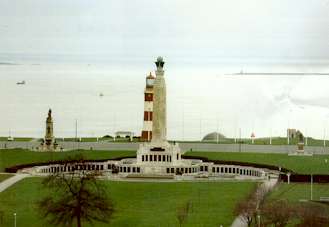
REFERENCES
Information obtained from The Commonwealth War Graves web site. www.cwgc.org/ .The picture of H.M.S. Jupiter has kindly been supplied by Navy News. Information on the action involving H.M.S. Jupiter is from the War Diaries held by the MOD Naval Historical Branch.The picture of I-55 is a photo from the Imperial War Museum, scanned from "Submarines of the Imperial Japanese Navy" by Polmar and Carpenter. I-60 was a Kadai Type 3b class submarine, launched 24 April ,1929 and completed in December 1929. She was refitted in 1937. More details on I-60 can be obtained from the website :-http://www.combinedfleet.com/type_kd3.htm We are indebted to The Imperial War Museum for the pictures involving H. M. S. Express. The pictures of the medals were kindly provided by Worcestershire Medal Service Ltd.11/05/02 last updated
**********************************************************
These pages are dedicated to the memory of the Fallen from the two World Wars, who lived in Abberton & Langenhoe.. Prepared by Saint Andrew's Parochial Church Council. November 11th 2000